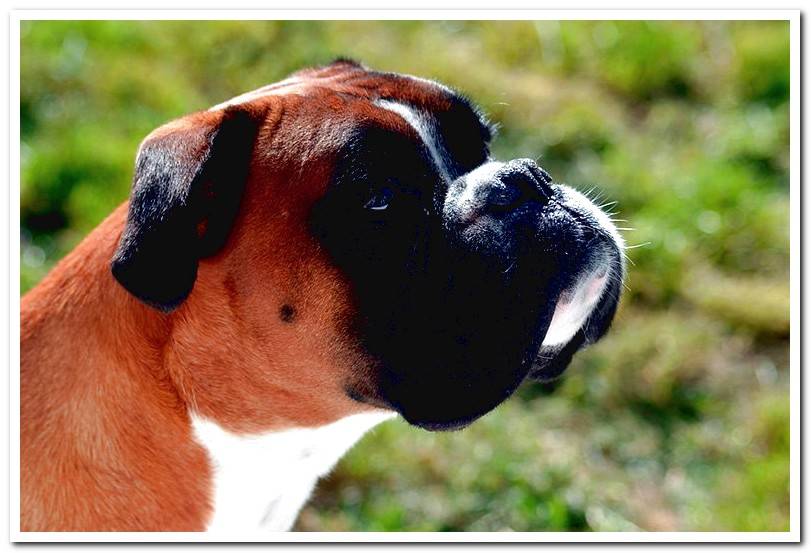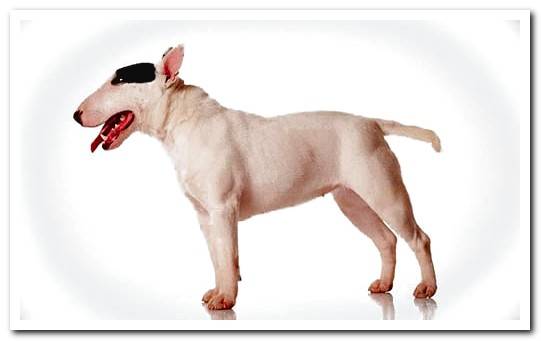
Many of the dogs that have what we know as flat snout, that is, they have a short snout, can be affected by the well-known brachiocephalic syndrome, which hinders their breathing.
This problem occurs as a result of certain abnormalities in the dog’s nasopharynx area, which makes breathing more difficult and even produces sounds very similar to snoring, snoring. Let’s take a closer look at this:
Index of contents
- 1 My dog is breathing hard: Types of abnormalities
- 2 Brachycephalic dog breeds
- 3 Symptoms of Brachycephalic Syndrome
- 4 How to know if my dog has Brachycephalic Syndrome
- 5 Is there a treatment for Brachycephalic Syndrome?
- 6 Tips
My dog is breathing hard: Types of abnormalities
There are four classes of physical abnormalities that can cause brachiocephalic syndrome in our dog, to a greater or lesser degree of severity.
The most common causes are:
- Nose with marked narrowing of the nostrils
- A prolonged soft palate, which may partially obstruct the airway.
- Eversion of the laryngeal saccules, which hinders the passage of air.
- Trachea narrower than usual.
Any of these options can make breathing difficult of our dog, especially when running, playing, exercising or when it is very hot.

Brachycephalic dog breeds
Brachycephalic dogs, which can develop this syndrome, are the following:
|
|
|
|
|
|
|
|
|
|
|
|
|
|
|
|
|
|
|
|
|
|
|
|
|
|
|
|
|
|
|
|
With age, these dogs may have more respiratory problems such as inflammation of the larynx, pharynx, tonsils, or collapse of the epiglottis, which is a part of the larynx, giving rise to what we know as this syndrome.
Symptoms of Brachycephalic Syndrome
The main symptoms presented by a dog with Brachiocephalic Syndrome, are:
- Difficulty breathing (dyspnea) or noisy breathing
- Sleep apnea
- Exercise intolerance
- Loud snores and snoring.
- The dog’s skin is bluish, due to poor oxygenation of the blood in the lungs
- Have difficulty swallowing
- Periodontal disease
- The dog is more susceptible to heat stroke
- Nausea or vomiting
- Adopt an abnormal posture to breathe easier
- Collapse
These signs of the disease can manifest in dogs from 12 months old. So if you suspect your furry friend may have this syndrome, feel free to take him to the vet.

How to know if my dog has Brachycephalic Syndrome
When you are at the vet clinic, the vet will review your dog’s medical history and do an initial physical exam. If you think there are indeed indications of Brachiocephalic Syndrome, you will surely want to do a blood test to see the pH and CO2 levels.
You can also have x-rays of the neck and chest to see if there are any airway problems or an exa
m by endoscopy to see the trachea area and the upper airway. Finally, you may also want to do a bacterial culture or a biopsy of this area to get out of doubt.
Is there a treatment for Brachycephalic Syndrome?
Treatment to eliminate respiratory problems in dogs with Brachiocephalic Syndrome usually goes through surgical intervention.
In the operating room can remove excess tissue, for example of the soft palate or in the nostrils, to improve air flow. Laryngeal saccules can also be removed so they don’t obstruct the airway.
Some specialized clinics perform this procedure with laser technology, which avoids stitches and makes recovery after surgery much easier.
If the diagnosis occurs at an early stage, will be more likely to overcome this condition. On the other hand, if it is not detected in time, Brachiocephalic Syndrome can worsen and cause other major complications.
Tips
Some of the symptoms of canine Brachiocephalic Syndrome can be prevented or limited, taking into account the following tips:
- Try not to stress your dog or practice excessively intense physical exercise
- Avoid heat stroke
- Make sure that their diet is balanced and that they are not overweight
- Instead of a collar, use a harness to avoid pressure on the trachea.
- Don’t fly with him, he can’t (he shouldn’t)
- Keep your nostrils clean, so you can breathe easier (check for excess mucosa or hair)
Following these recommendations and the treatment indicated by your veterinaryn, the dog will not be so affected and will be able to fully recover if it is detected at an early stage.
